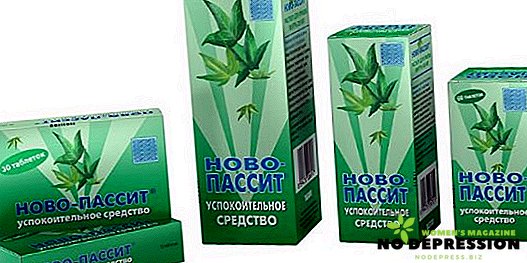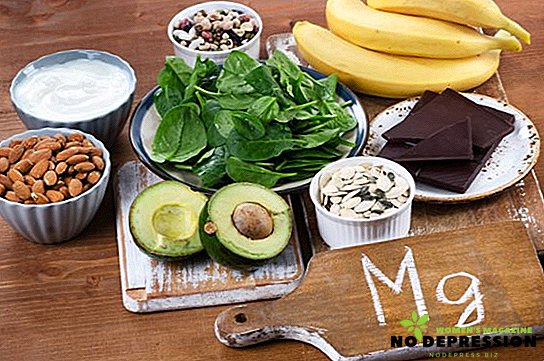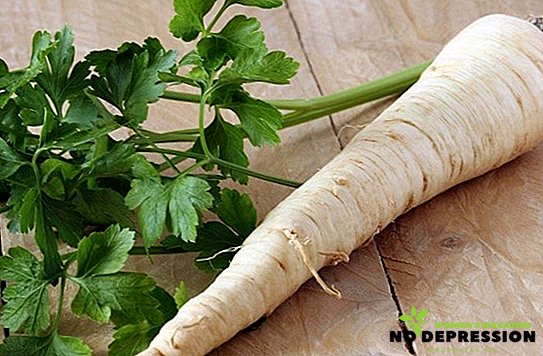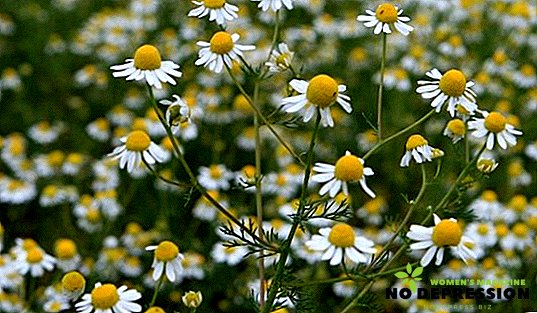A lactating woman may be surprised by lactostasis. It is characterized by symptoms such as swelling of the chest, fever. Often, a young mother is frightened by this situation and is at a loss as to whether to stop feeding her baby with milk, or if she needs to see a doctor. With timely and proper treatment at home, this pathology can be eliminated in literally two days. It is only necessary to know which methods and methods should be applied.

What is lactostasis?
Lactostasis is an obstruction of the ducts of the breast. Temporary cessation of the natural waste of milk can cause tissue edema. At the initial stage, this phenomenon is not dangerous, but at the same time there may be chest pain and a slight increase in body temperature. This is due to the fact that milk protein, which has long accumulated in the milk duct, becomes alien for the body.
And to protect the body during this period begins immunity.
If within 2-3 days there is no improvement and there is no treatment, the disease begins to be a danger to humans.
If the temperature has not dropped, it is imperative to consult a doctor. In the event that it took about a week from the onset of the disease, it could cause infectious mastitis. Therefore, it is very important not to self-medicate, as this can cause serious complications.
Causes of lactostasis
The reasons that lead to this disease include:
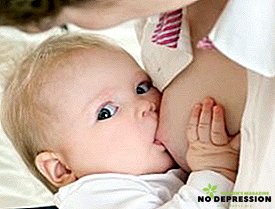 Feeding in the same pose. In the same position, the baby releases only some parts of the breast, while in others the obstruction of the milk ducts is formed, which can cause traffic jams.
Feeding in the same pose. In the same position, the baby releases only some parts of the breast, while in others the obstruction of the milk ducts is formed, which can cause traffic jams.- Sleep in the same phase. If you lie on one side all the time, milk will accumulate only in that part of the breast, which is located under the armpits.
- Incorrectly selected underwear. The bra can be very tight, and the bones hard, which ultimately causes difficulty milk waste.
- A small amount of fluid consumed. Especially in the heat it is important to drink plenty of water, otherwise the milk will be very viscous. In this case, the child will be quite difficult to suck him.
- Use nipples and pacifiers. If the child often sucks on the nipple, he already sucks the breast less actively.
- Breast injuries. When injured, edema is formed, the patency of the glands is disturbed.
- Squash If the child constantly eats mother's milk, it is not recommended to express the remaining. Many mothers do this in a way that ultimately leads to an increase in lactation. At the same time, milk production increases, the child cannot suck everything up to the end. The remaining fluid inevitably leads to blockage of the ducts.
Previously, mothers fed their babies according to the regimen: they applied the baby to the breast once in 3 hours, constantly decanting the remaining liquid. With this method of feeding the possibility of the appearance of lactostasis and mastitis is greatly increased. By feeding a baby on demand, you can avoid such diseases.
Main features
In the initial stage, the disease practically does not manifest itself; mother feels satisfactory. At the first stage of the disease may appear a tightness in the chest in the form of a ball. At the same time, reddened bumps can be seen on the skin surface. Also, the stagnation of milk can cause the appearance of edema in problem areas. When feeding a woman, the breast begins to resemble a stone, it is very painful to touch her, you may feel unpleasant symptoms in the form of tingling or burning.
Most often, lactostasis is characterized by a temperature of +37.5 degrees. If it has risen higher, this may indicate the development of infectious mastitis, which is usually the result of lactostasis.
This type of disease is accompanied by severe pain in problem areas, a rise in temperature of up to +38 degrees. If a woman has suffered an infectious disease, and the temperature and chest pain do not disappear within 2-3 days, it is advisable to consult a doctor. Most likely, the blockage of the milk ducts led to infection. If this is confirmed, the nursing mother will be prescribed medication or surgical treatment. For mastitis is also characterized by the appearance of cracks in the nipples, which causes the further spread of the infectious process.
The difference between lactostasis and mastitis
It is important to distinguish these diseases from each other in time. Mastitis is characterized by more pronounced symptoms, the condition of the woman is seriously worsening. To understand that high fever is a result of changes in the chest, check it not only in the armpits, but also in the groin and elbows.
Usually pathology lasts about 2 days, after which it passes. If during this period after the measures have been taken, pain, compaction, redness has not disappeared, be sure to consult a doctor. If a doctor finds infectious mastitis, he will prescribe a drug treatment.
Can I continue to breastfeed with the disease?
When lactostasis or non-infectious mastitis can not stop breastfeeding. In this case, the baby should be applied to the breast as often as possible. But the termination of natural feeding is allowed in the presence of infectious mastitis.
The child is more effective than all methods can cope with the blockage of the milk ducts. However, when the pathology is neglected, it is very difficult for a child to suck out milk, therefore, it is recommended to first express it in a small amount. Try to feed the child at least once an hour, and at night put him in your bed to apply to the chest every 3 hours.
Lactostasis treatment at home
To eliminate the stagnation in the mammary glands do not need to take drugs. A nursing woman will cope with the disease at home. Breastfeeding specialists and doctors recommend adhering to several techniques.
Proper posture while feeding
When this pathology appears, it is important to learn how to properly attach the baby to the breast. In this case, it will release the place where the blocked milk ducts appeared. To do this, choose a pose in which the child's chin will look at the sealing area. Most often, blockage occurs in the upper chest. The following postures are suitable for release:
- Jack pose. In this case, the mother and the child lie on the bed on their side in different directions.
- Soccer ball pose. When she is newborn during feeding lies on the side of the pillow, and his legs while directed to the mother's side.
Massage
 With this disease, to avoid injury to the mammary glands, it is necessary to massage the breast correctly.
With this disease, to avoid injury to the mammary glands, it is necessary to massage the breast correctly.
In this case, too active procedure is harmful, since such a massage can cause injury and inflammation of the area. During the massage it is necessary to do smooth strokes, circular slow movements.
Kneading up the chest in the direction from the outer area to the nipple, which will release the milk duct from blockage. If there is severe pain, it is necessary to engage in a massage in the shower, in parallel with this, pumping.
Ointment
When lactostasis can also be used drugs. The main thing is to choose those that are allowed to take when breastfeeding. These include:
- Traumel S. Homeopathic medicine, which is necessary for relieving inflammation, pain, improving lymph circulation, blood, restoring damaged areas. When using it, the state of the vessels is normalized. The problem area of the mammary gland can be treated with ointment about 4-5 times a day. True, in some cases, allergic reactions may occur.
- Malavit This is the ointment that a pregnant woman should always have in the first-aid kit. Ready infusion diluted in half with water. A cotton pad moistened with liquid is applied to problem areas and is not removed until the next feeding.
But the following drugs should not be used to eliminate this disease:
- Vishnevsky ointment. When applying means there is a sharp rush of blood to the site, which can cause the development of mastitis. In addition, the ointment contains birch tar and other substances with a sharp odor, it will not disappear, even if you wash the treated area with soap. Naturally, this can cause the baby to give up the breast.
- Ointment arnica. It has a local irritant effect, it also contributes to the heating of tissues. It can also develop mastitis.
- Prozhestozhel. Hormonal ointment that reduces lactation. It is unacceptable when breastfeeding.
- Also not suitable standard means for removing edema, bruises, cooling creams. They are incompatible with this pathology can harm the child's body.
Healing compresses
Regardless of whether this pathology proceeds with or without temperature, you can use compresses from:
 Cabbage leaf. Take a fresh sheet, rinse, repel a little, to stand out juice. Put a compress on the problem area. When the sheet dries, it must be replaced with a new one. Before feeding the baby, be sure to wash the nipple and breast, as cabbage juice may have an adverse effect on the digestion of the newborn.
Cabbage leaf. Take a fresh sheet, rinse, repel a little, to stand out juice. Put a compress on the problem area. When the sheet dries, it must be replaced with a new one. Before feeding the baby, be sure to wash the nipple and breast, as cabbage juice may have an adverse effect on the digestion of the newborn.- Cottage cheese. Apply a cool cottage cheese cake on the inflamed area for 15-20 minutes.
- Flour and honey. Mix all the ingredients so as to get a homogeneous mass, put in a bag. Apply to the sore spot for 20 minutes.
Some believe that alcohol or camphor compresses are excellent for this disease. However, hot and alcohol-containing liquids as compresses in this pathology is contraindicated. And all because they contain substances that only complicate the situation. No need to use camphor oil. It will provide relief only for a short time, but at the same time it will negatively affect the amount of milk that the body produces.
Some useful tips
The following guidelines will help you avoid complications:
- When lactostasis should not drink No-shpu, since the action of this medicine is aimed at eliminating spasm. For lactostasis is characterized by the presence of edema, preventing the release of milk. In addition, No-shpa can cause an increase in milk viscosity.
- Antipyretic drugs. These funds do not fight the causes of diseases, but only remove the symptoms. But if mom has a temperature above +38 degrees, she feels not very comfortable, you can drink an Ibuprofen tablet. If you have not been able to correct the pathology on your own within two to three days, be sure to consult a gynecologist or a surgeon-mammologist. The doctor will examine, prescribe treatment. In case the temperature lasts for more than 3 days, antibiotics may be prescribed, for example Augmentin or Amoxicillin.
Vrvch, in addition to the above drugs, can prescribe physiotherapy, which can deal with stagnation:
- Ultrasound. Most often, a positive effect occurs after the first procedure.
- Magnetotherapy, electroneurostimulating therapy. The most safe to use devices Almag and Bioptron.
However, physiotherapy does not replace the full treatment, but only can complement it.
Methods of expressing milk during lactostasis
Another method of dealing with the disease is to express milk. If you release the area where the blockage occurred, the discomfort disappears over time. The child himself is doing an excellent job with this task, but when milk stagnates, it will be difficult for him to suck the breast. In such a case, it is recommended to squeeze a small amount of milk before feeding for easier flow of the liquid.
To eliminate milk stagnation, use the following methods:
- Manual. Squeezing is done with the help of hands, which will allow you to carefully get rid of the blockage.
- With the help of a breast pump. However, remember that with the use of such a tool, it will be more difficult to achieve a greater effect, since jewelry work is needed to eliminate lumps.
Features breast pumping hands
It is very important to carry out pumping in a comfortable environment in a comfortable position. If you take a shower, it will contribute to a simpler fluid drain. Grab the chest so that 4 fingers are under it, big - at the top. This will allow the most effective expression in the area where there is stagnation. After that, circle the areola circle with your thumb and forefinger. Dairy ducts in the disease are in the area where there is tuberosity. This area needs to be massaged.

Use your fingers to press down on the chest, making radial movements towards the nipple. Use the other hand to knead the seal. Try not to press too hard, do not press. This will avoid damage and injury. Regularly change the position of the fingers to evenly express milk from all areas.
If there is inflammation, you can feel pain while expressing. To reduce it, use anti-inflammatory drugs in the form of candles or tablets, injections. After pumping, apply a cold compress on your chest. To remove the swelling, it is enough to attach a cold towel on top for two or three minutes. With lactostasis, it is recommended to express one or two times a day.
Preventive measures
To avoid lactostasis, use the following preventive measures:
- When feeding a child, change the position to evenly release the milk ducts.
- Do not hold the breast when feeding - milk should flow freely.
- Give the baby a breast more often.
- Protect yourself: choose comfortable clothes, do not let your child pinch, press on the chest.
- Do not use pacifiers and bottles.


 Feeding in the same pose. In the same position, the baby releases only some parts of the breast, while in others the obstruction of the milk ducts is formed, which can cause traffic jams.
Feeding in the same pose. In the same position, the baby releases only some parts of the breast, while in others the obstruction of the milk ducts is formed, which can cause traffic jams. Cabbage leaf. Take a fresh sheet, rinse, repel a little, to stand out juice. Put a compress on the problem area. When the sheet dries, it must be replaced with a new one. Before feeding the baby, be sure to wash the nipple and breast, as cabbage juice may have an adverse effect on the digestion of the newborn.
Cabbage leaf. Take a fresh sheet, rinse, repel a little, to stand out juice. Put a compress on the problem area. When the sheet dries, it must be replaced with a new one. Before feeding the baby, be sure to wash the nipple and breast, as cabbage juice may have an adverse effect on the digestion of the newborn.
